Oh, the strategy pundits hate me! It’s not because I’m tall, good looking and from Iowa (well, 2 out of 3 ain’t bad), it’s because I think Strategy as a “Discipline” is way overblown. I won’t go as far as the Harvard Business Review to state that “Strategy is Dead”, but the importance of carefully defining a strategy (typically done in the ivory towers of the puzzle palace) and then commanding all the little soldiers to follow the strategy script are over!
Former World Heavyweight Boxing Champion Mike Tyson famously said that everyone has a plan, until they get punched in the mouth. And I think the traditional strategy function finds itself in the same predicament – everyone has a strategy, until they get punched in the mouth.
The Internet and Globalization have mitigated the economic, operational and cultural impediments traditionally associated with time and distance. We are an intertwined global economy, and now we realize (the hard way) that when someone sneezes in some part of the world, everyone everywhere gets sick. We are constantly getting punched in the mouth, and while we may not be sure from whence that punch might come next (pandemic, economic crisis, financial meltdown, climate change, catastrophic storms), trust me when I say that in a continuously transforming and evolving world, there are more punches coming our way.
So, my next two blogs are going to discuss: How does one develop and adapt data and AI strategies in a world of continuous change and transformation? It’s not that strategy is dead (though at times Strategy does look like an episode of the “Walking Dead”); it’s that strategy – like every other part of the organization and the world – needs to operate in an environment of continuous change and transformation.
Let’s dive into the subject, and let’s get those strategy pundits all wound up!
Data Strategy: Tragic Mismatch in Data Acquisition versus Monetization Strategies
Organizations spend 100’s of millions of dollars in acquiring data as they deploy operational systems such as ERP, CRM, SCM, SFA, BFA, eCommerce, social media, mobile and now IoT. Then they spend even more outrageous sums of money to maintain all of the data whose most immediate benefit is regulatory, compliance and management reporting. No wonder CIO’s have an almost singular mandate to reduce those data management costs (hello, cloud). Data is a cost to be minimized when the only “value” one gets from that data is regulatory, compliance and management risk reduction.
Organizations have a tragic mismatch in their investments in acquiring and managing data versus their investments in monetizing data (see Figure 1).
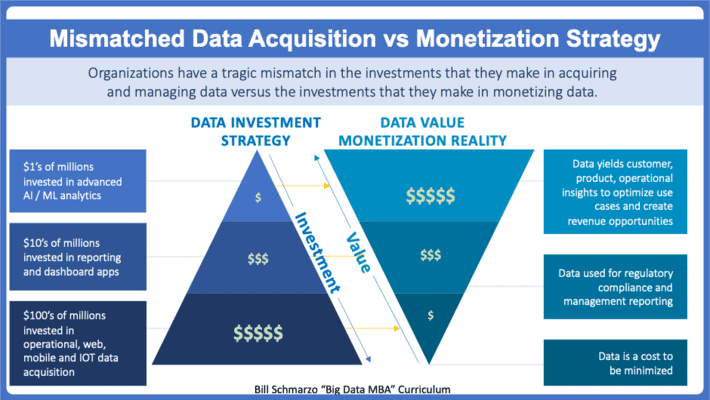
Figure 1: Mismatched Data Acquisition versus Data Monetization Strategies
As my followers know, I preach almost non-stop about the unique economic characteristics of data – data never wears out, never depletes and can be used across an unlimited number of use cases at near zero marginal cost. But if data possesses this outsized economic potential, why is there a tragic mismatch in organization’s investments in acquiring and managing data versus their investments in monetizing data?
As in most organizational transformations, step 1 starts by reframing the conversation.
Reframing the Data Strategy Conversation
Many moons ago, I stated that “Organizations do not need a Big Data strategy; they need a business strategy that incorporates Big Data” (hence my nickname the Dean of Big Data).
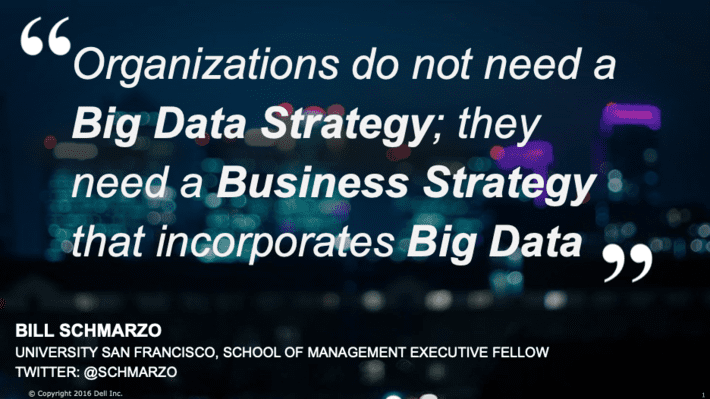
To quote the Harvard Business Review (and they can’t possibly be wrong): “The problem is that, in many cases, big data is not used well. Companies are better at collecting data – about their customers, about their products, about competitors – than analyzing that data and designing strategy around it.[1]”
Too many organizations are making Big Data, and now IOT, an IT project. Instead, think of the mastery of big data and IOT as a strategic business capability that enables organizations to exploit the power of data with advanced analytics to uncover new sources of customer, product and operational value that can power the organization’s business and operational models (see Figure 3).
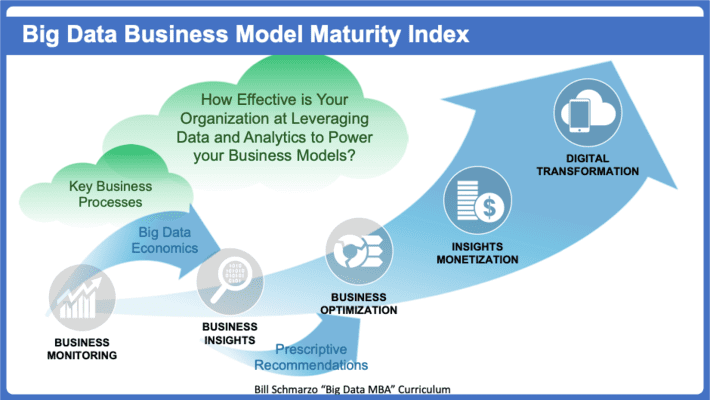
To exploit the unique economic value of data, organization’s need a Business Strategy that uses advanced analytics to interrogate/torture the data to uncover detailed customer, product, service and operational insights that can be used to optimize key operational processes, mitigate compliance and cyber-security risks, uncover new revenue opportunities and create a more compelling, more differentiated customer experience.
But exactly how does one accomplish this?
By focusing on becoming value-driven, not data-driven.
Adopting a Value Engineering Mentality
The value of data isn’t having it (data-driven). The value of data is using it to derive and drive new sources of “wealth” (value-driven). To exploit the economic potential of data, Executives must transition from a data-driven mindset to a value-driven one that focuses on exploiting data to uncover new sources of customer, product and operational value (see Figure 4).
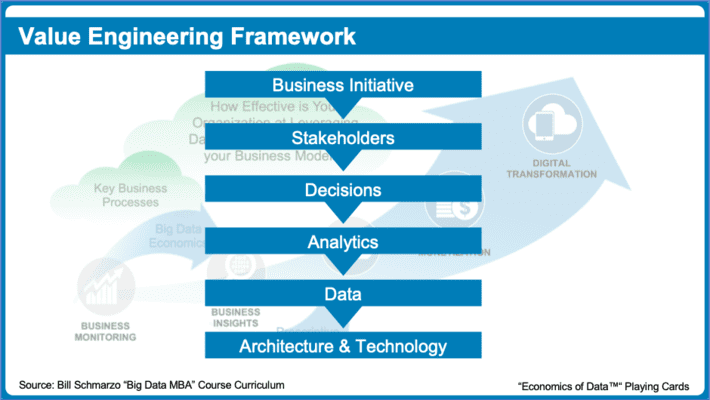
The heart of the Value Engineering Framework in Figure 3 is the collaboration between the different stakeholders to identify, validate, value and prioritize the Decisions (Use Cases) that support the organization’s key business initiatives. It is these Use Cases that help you determine which data is most relevant (because not all data is of equal value) – to differentiate the signal from the noise buried in the data.
Data may be the new oil and one of the most valuable resources in the world, but it is the analytic insights buried in the data that will determine the winners and losers in the 21st century.
Data Lake as Collaborative Value Creation Platform
If you don’t care if your data lake turns into a data swamp, then just go ahead and toss your data into your unmanageable gaggle of data repositories. Mission Accomplished! BUT if you seek to exploit the unique characteristics of data – assets that never deplete, never wear out and can be used across an infinite number of use cases at zero marginal cost – then transform your data lake into a “collaborative value creation” platform that supports the capture, refinement and re-use of your data assets across the organization (see Figure 5).
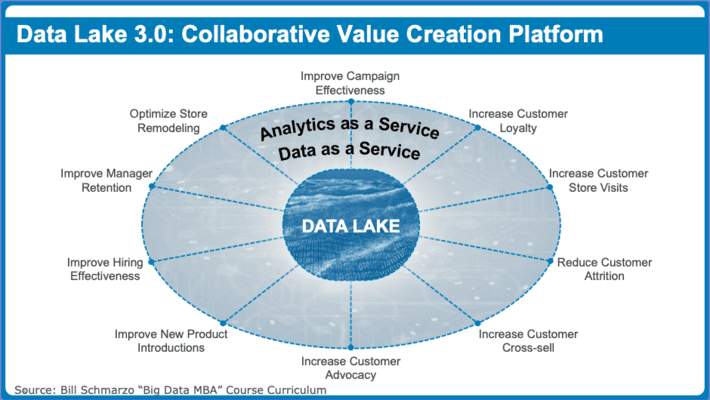
From the “Disposable Technology: A Concept Whose Time Has Come” blog about modern digital companies, we learned two important Data Lake lessons:
- Lesson #1: Use the organization’s key use cases to drive organizational alignment on identifying, capturing and operationalizing new sources of customer, product and operational value buried in the data.
- Lesson #2: Don’t implement a rigid technology architecture that interferes with Lesson #1.
Modern digital companies realize that they are in the data monetization business, and the data lake is the platform for driving that data monetization.
A Data Strategy that Delivers Value Summary
In summary:
- While most organizations have a data strategy, there is a tragic mis-alignment between the investments made in data acquisition and storage versus the investments made in data monetization.
- Data may be the new oil and one the most valuable resources in the world, but it is the analytic insights buried in the data that will determine the winners and losers in the 21st century.
- Organizations need to embrace a value engineering approach to close the data strategy versus data monetization realization gap.
- How do you differentiate signal from noise within the data? The business and operational use cases will tell what in the data is important, and what is not.
- If you focus on leveraging data to become value-driven, then the role of your data lake to power your business and operational initiatives will change FOR-EV-ER.
